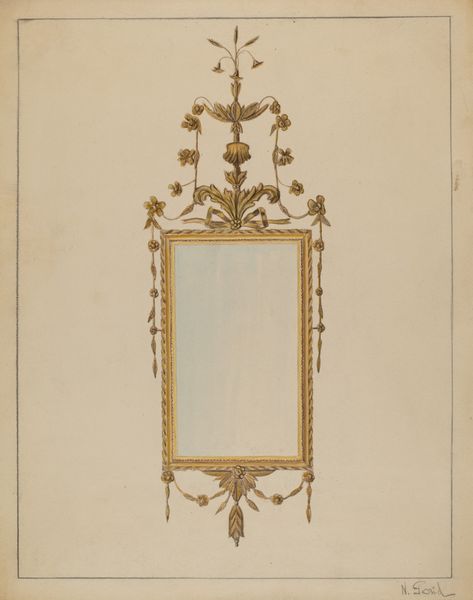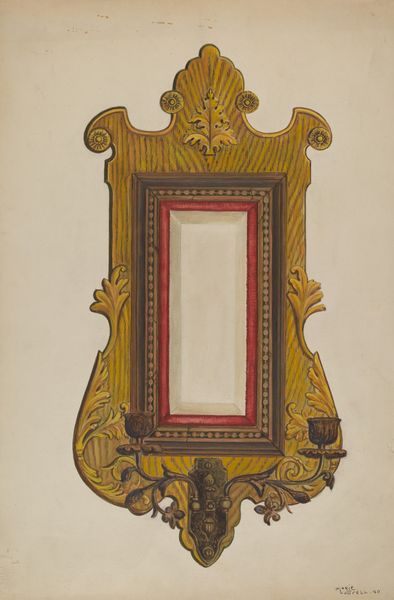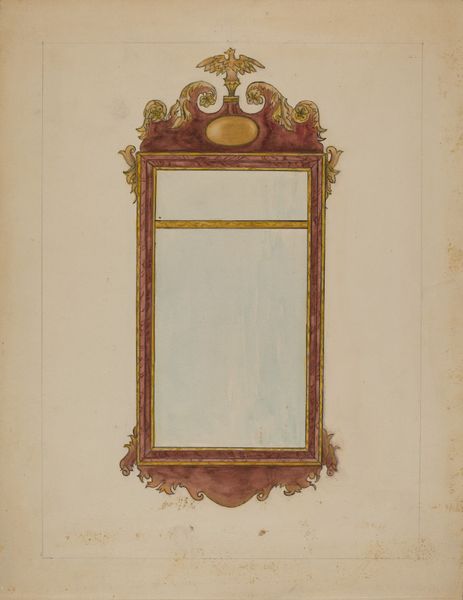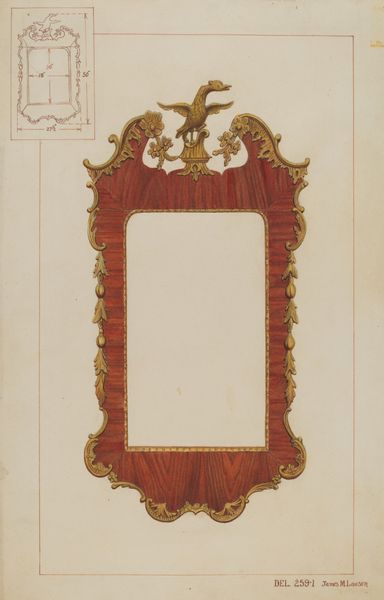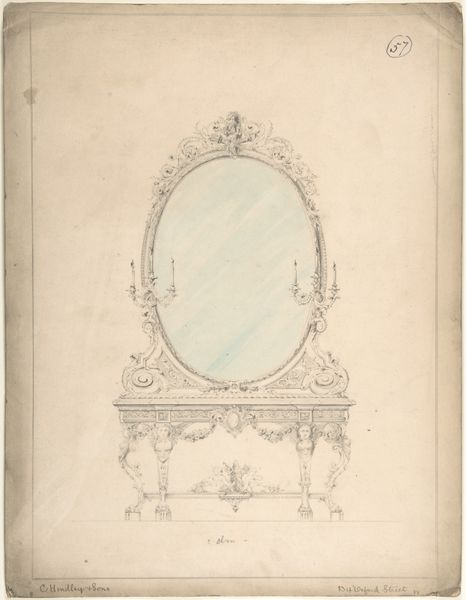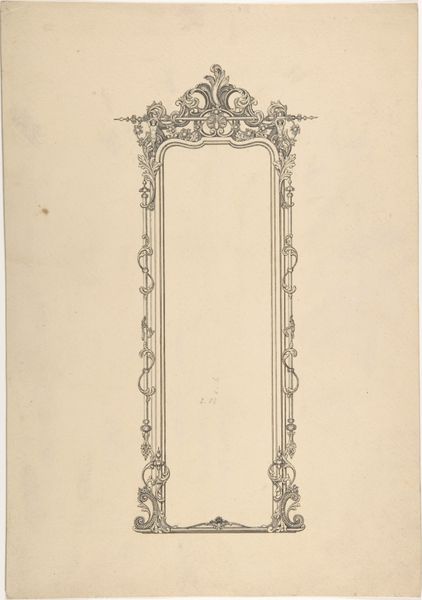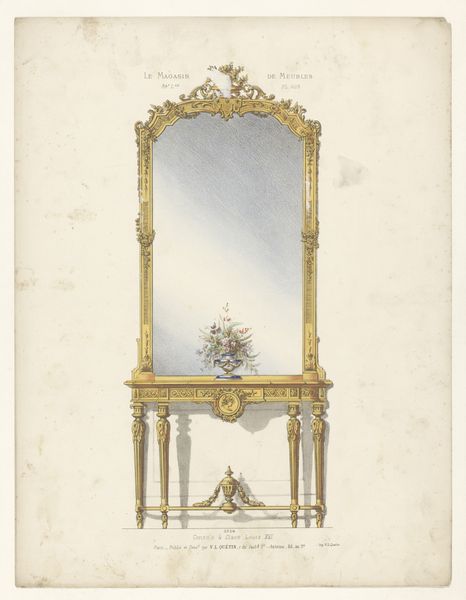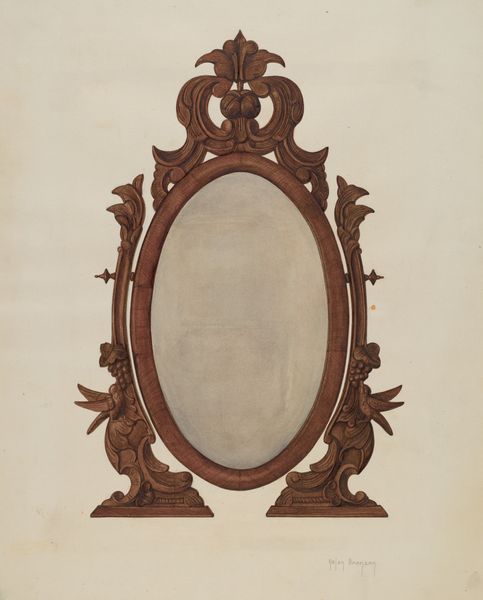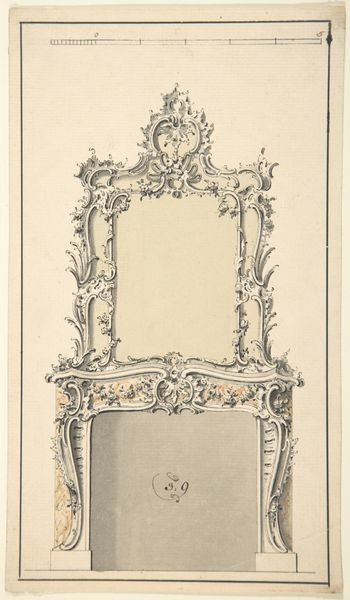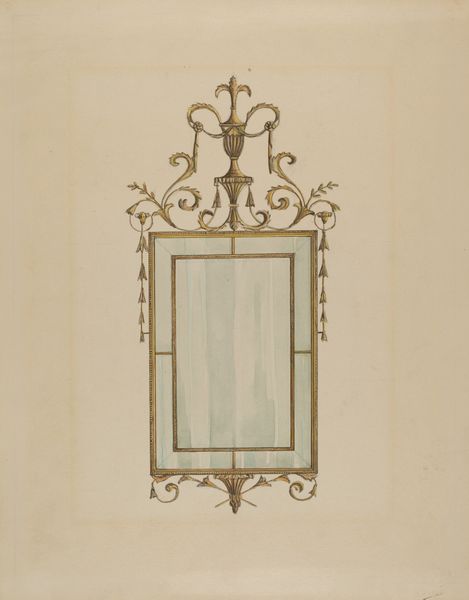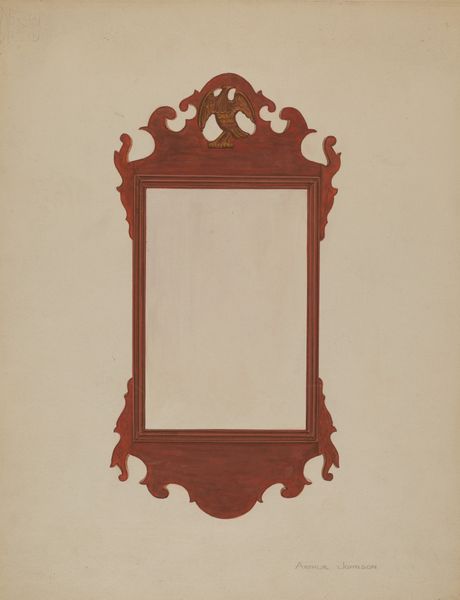
drawing, paper, ink
#
drawing
#
paper
#
ink
#
geometric
#
academic-art
#
decorative-art
Dimensions: overall: 30.4 x 24.3 cm (11 15/16 x 9 9/16 in.) Original IAD Object: 32 1/2"high; 20 1/2"wide. With ornament, 57 1/2"high; 24"wide.
Copyright: National Gallery of Art: CC0 1.0
Curator: The decorative charm of this drawing hits you first, doesn't it? The gold tones radiating off the simple geometric design create an image that’s strangely calming, I find. Editor: It’s certainly gilded and restrained all at once. This piece, entitled "Mirror," was designed by Arthur Johnson around 1937, executed in ink on paper. Looking closely, you can see how the material production leans into the art deco influences, despite being produced slightly later than the height of that movement. It speaks to accessibility of art and design movements to everyday people. Curator: And its reflection upon accessibility raises critical questions, especially given the social context of the late 1930s, a period rife with global tensions. Consider how this stylized mirror design, seemingly innocuous, intersects with gender and class dynamics. Mirrors, after all, are powerful symbols in patriarchal societies; who is afforded the privilege of seeing themselves, and under what gaze? Editor: That's insightful. From my perspective, the piece evokes the skilled labor and industry of design itself, perhaps intended for mass production. Ink on paper allows for replication— suggesting a blueprint, or template, for wider dissemination. This makes you think about how a certain aspirational lifestyle could be propagated across socio-economic classes. Curator: Precisely. It prompts contemplation of societal structures—the upper echelons projecting aspirations onto those below through carefully mediated objects. Consider also the decorative motifs: the flora, the symmetrical arrangement— are these symbols of imposed ideals? Editor: Well, shifting back to a practical understanding of production, you notice the paper supports intricate details efficiently, suggesting an evolving relationship between material, technology, and market. Curator: In short, its placement becomes highly significant: within middle class and upper-middle class drawing rooms or entryways of that period? Who are the subjects encountering their reflections in these manufactured objects, and how are their identities shaped, reinforced, or challenged in these interactions? Editor: Ultimately, "Mirror" encapsulates so many threads for consideration—labor, consumption, the subtle communication of societal expectations – within the context of craft. It urges a deeper look at how industry enables our desire to represent, or more cynically, market ourselves. Curator: This examination leaves me more attuned to how art, particularly in these seemingly 'minor' pieces, reflect prevailing power dynamics. How notions of beauty are never neutral, but imbued with the weight of social expectation. Editor: It gives a better appreciation for those gilded frames! Everything comes at some kind of production cost—intellectual and material.
Comments
No comments
Be the first to comment and join the conversation on the ultimate creative platform.
